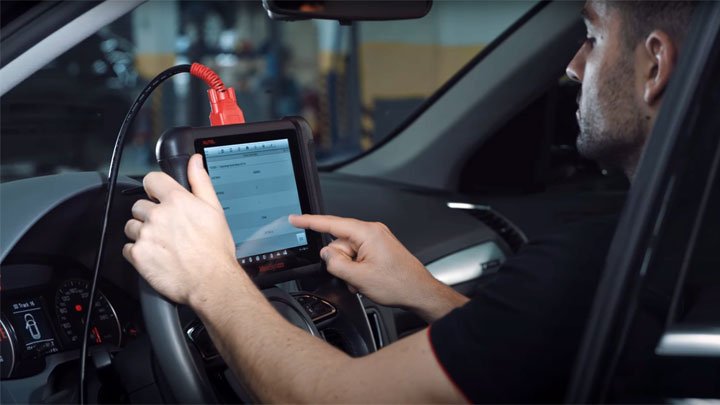Ten Easy Steps To Launch The Business Of Your Dream Door Lock Repair Business

Comprehensive Guide to Door Lock Repair: Ensuring Security and Functionality
Door locks play an important role in protecting homes and services, offering assurance and protecting valuable properties. However, gradually, door locks might experience malfunctions or wear due to numerous factors. This article explores the common problems connected to door locks, reliable repair methods, and helpful maintenance pointers for guaranteeing their durability and performance.
Comprehending Door Lock Types
Before delving into repair approaches, it is necessary to comprehend the numerous kinds of door locks. car key button repair may provide unique concerns requiring different techniques to repair. The most common door lock types consist of:
| Lock Type | Description | Typical Issues |
|---|---|---|
| Deadbolts | Bolt that extends into the door frame for security. | Sticking, trouble turning, misalignment |
| Knob Locks | Round lock discovered on doors. | Loose knobs, stuck key, broken springs |
| Lever Handle Locks | Lever-operated locks frequently found in industrial spaces. | Deal with looseness, lock cylinder issues |
| Smart Locks | Electronic locks controlled through app or keypad. | Connection issues, battery failure, software glitches |
Typical Lock Problems and Repair Techniques
1. Sticking or Jammed Locks
Signs:
- Difficulty turning the key
- Key gets stuck
- Lock feels stiff
Repair Steps:
- Lubrication: Apply a graphite-based lubricant to the keyhole and key mechanism. Avoid oil-based lubricants, which can draw in dirt.
- Modification: Check if the door or lock is misaligned. Change the screws or hinge positioning as essential.
- Cleaning: Remove dirt and particles from the lock cylinder using compressed air or a clean cloth.
2. Loose or Wobbly Knobs and Handles
Signs:
- Knobs or deals with fall out of location
- Excessive movement when turning
Repair Steps:
- Tightening Screws: Using a screwdriver, tighten the screws that hold the knob or handle in place.
- Changing Washers: If components are worn out, consider changing washers or internal components specific to the lock type.
3. Broken Key Issues
Symptoms:
- A key ends up being stuck within the lock
- The key breaks off in the cylinder
Repair Steps:
- Retrieval: If a key breaks off, utilize a set of needle-nose pliers to thoroughly extract the piece from the lock.
- Key Replacement: For badly harmed keys, obtain a duplicate or rekey the lock to guarantee security.
4. Misaligned Locks
Signs:
- The door does not close appropriately
- Latch does not engage with the strike plate
Repair Steps:
- Adjust Hinges: Use a screwdriver to tighten up or rearrange hinges.
- Realign Strike Plate: If the lock bolt does not line up with the strike plate, think about moving the plate slightly to accommodate the lock.
5. Smart Lock Malfunctions
Symptoms:
- Lock fails to react to keypads or smartphone apps
- Connectivity problems
Repair Steps:
- Battery Check: Replace the batteries within the smart lock if it reveals signs of power failure.
- Software Update: Check for firmware or software application updates through the lock maker's application.
Preventive Maintenance Tips
Preserving door locks can extend their lifespan and minimize the likelihood of malfunctions. Think about the following tips for efficient lock upkeep:
- Regular Lubrication: Apply graphite-based lubricant every 6 months to keep internal elements moving efficiently.
- Examine Regularly: Periodically inspect locks for any indications of wear, misalignment, or damage.
- Secure Against Weather: For outside locks, think about using weather-resistant locks and make sure that they are frequently cleaned to remove severe elements.
Frequently asked question Section
1. How typically should I change my door locks?
It is recommended to alter your door locks whenever you move into a new home, experience a break-in, or your existing locks reveal significant wear. Routine assessments can also assist prompt replacement.
2. What can I do if my lock is frozen during winter season?
Use a lock de-icer that is specifically developed for this circumstance. Applying heat (like a hair clothes dryer) might also help, but beware of harming the lock.
3. Can I repair a lock myself?
Lots of minor lock concerns such as lubrication, tightening up screws, and realignment can be dealt with DIY. However, if the issue is extreme or needs a lock rekeying, professional support may be necessary.
4. When should I call a locksmith?
If your efforts to repair the lock fail or if you discover yourself locked out, it is best to speak with a professional locksmith for support.
Investing time in understanding and carrying out door lock repairs can substantially enhance the security and performance of your locks. Recognizing common issues and proactively addressing them, while including preventive maintenance practices, can ensure that your door locks remain reliable for years to come. Ought to problems persist or intensify, professional locksmith services are always available to secure your security requires.

